The Holy Inquisition in Bronte
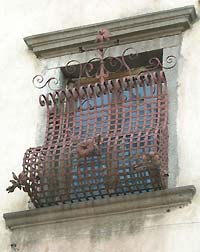 The historian Benedetto Radice writes that in the XVI° century, under the Spanish rule, the Holy Inquisition was present in force even in Bronte, where a general commissary and "eight familiares", eight, suitably named cops or ministers, had the task to control and denounce the heretics. The historian Benedetto Radice writes that in the XVI° century, under the Spanish rule, the Holy Inquisition was present in force even in Bronte, where a general commissary and "eight familiares", eight, suitably named cops or ministers, had the task to control and denounce the heretics.
Of the people of Bronte prosecuted by the Sant' Office, besides the rural Antonino Gorgone, nicknamed Galluzzo and Tommaso Schiros, eloquent orator, theologian and writer, that, accused of heresy, was sentenced to four years of jail, deserves to be remembered also sister Frances Spitaleri Bertino of the Tertiary of S. Francesco, now completely forgotten. Of high culture, she wrote religious works and had holiness reputation; some people were saying that she had received Christ's stigmata and that she talked to God and to the angels in her frequent visions. Accused of heresy, had a first sentence (1621); "...to escape the stake, abjured and was sent for seven years to serve in a hospital". Subsequently, considered a heretical impenitent, was submitted to a new process and sent to jail in Palermo". The poor woman, foreseeing the most varied punishments and the sentence to the stake, tried to escape from the jail and a night of the September 1640 she lowered herself down with a bad rope, made with the wool of her mattress. The rope broke and the poor nun found a cruel death falling heavily to the ground. "Despite this, the process went on just the same"; they confiscated her possessions, condemned her memory and burned her body and her writings. "One ignores why and to whom the innocuous little nun of Bronte could have been dangerous, to the point to undergo such an obstinate persecution and such atrocious end". The Sister Frances vicissitude is resumed also by the poet and essayist brontese Pasquale Spanò in his book "Once upon a time there was the Rizzonito - Bronte in the history of Europe" (Turin, 1993).
To sister Frances ("innocent victim offered to God as holocaust to supreme expiation"), Pasquale Spanò in the book "Etnei" (Turin, 1963) dedicates also a poetry of his ("Francesca"). Many and also precious vestments and holy vessels belonging to the church, are signs of ancient devotion and splendor.
| 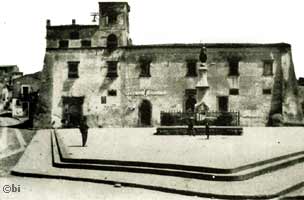 The San Silvestro church (or Batia) is of the same age as the others rising in Bronte after the meeting of the farmhouses for Carlo v (1535 -- 1548) order, but the precise date of building is not known.
The San Silvestro church (or Batia) is of the same age as the others rising in Bronte after the meeting of the farmhouses for Carlo v (1535 -- 1548) order, but the precise date of building is not known.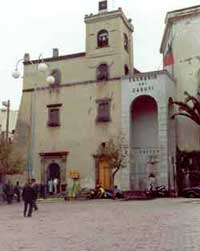 The church is of rectangular shape with apse; in its inside can be observed the decorations of gilt diamonds of the ceiling of nave and apse and the alternate motif of arches and pilasters just in bas-relief which pronounce the flat side walls.
The church is of rectangular shape with apse; in its inside can be observed the decorations of gilt diamonds of the ceiling of nave and apse and the alternate motif of arches and pilasters just in bas-relief which pronounce the flat side walls.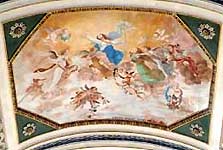 The most beautiful picture is that of the communion of Santa Maria Egiziaca, whose original, by Novelli, is exposed in the national museum of Palermo.
The most beautiful picture is that of the communion of Santa Maria Egiziaca, whose original, by Novelli, is exposed in the national museum of Palermo.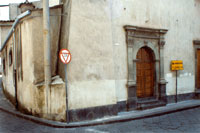
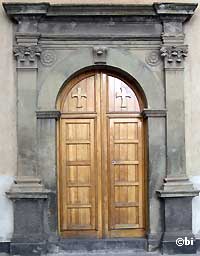
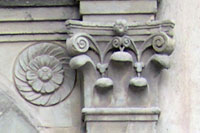
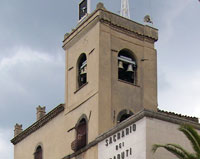
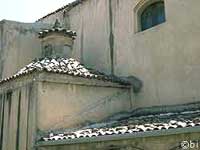
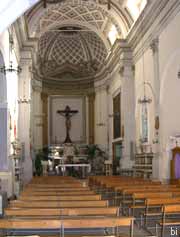
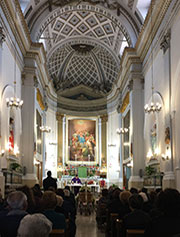
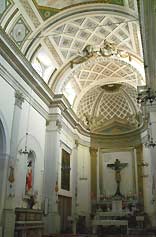
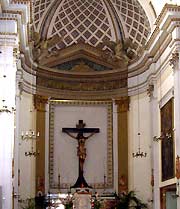
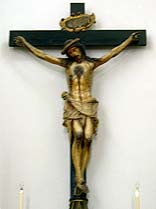
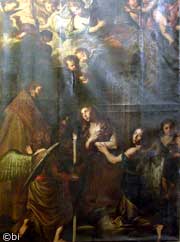
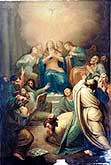
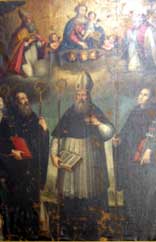
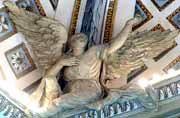
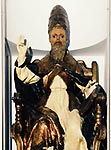
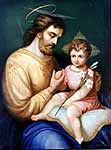
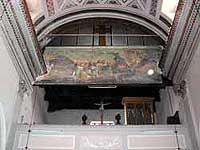 The Cantoria is the oldest part of the church where traces of the ancient coffered
The Cantoria is the oldest part of the church where traces of the ancient coffered  ceiling are still visible.
ceiling are still visible.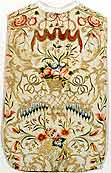 Many and precious are also the liturgical furnishings owned by the church of S. Silvestro, signs of ancient devotion and splendor.
Many and precious are also the liturgical furnishings owned by the church of S. Silvestro, signs of ancient devotion and splendor.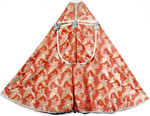
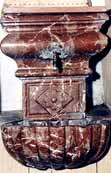
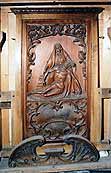 A few fragments (165.00 x 120.00 cm) of the imposing catafalque unfortunately dismembered a few decades ago still remain. It was once used by the Confraternity of Maria SS. della Misericordia which has its headquarters in the church for the funerals of its deceased brothers. It was designed and created in 1930 by the well-known sculptor
A few fragments (165.00 x 120.00 cm) of the imposing catafalque unfortunately dismembered a few decades ago still remain. It was once used by the Confraternity of Maria SS. della Misericordia which has its headquarters in the church for the funerals of its deceased brothers. It was designed and created in 1930 by the well-known sculptor 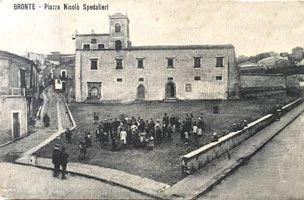
 The historian Benedetto Radice writes that in the XVI° century, under the Spanish rule, the Holy Inquisition was present in force even in Bronte, where a general commissary and "eight familiares", eight, suitably named cops or ministers, had the task to control and denounce the heretics.
The historian Benedetto Radice writes that in the XVI° century, under the Spanish rule, the Holy Inquisition was present in force even in Bronte, where a general commissary and "eight familiares", eight, suitably named cops or ministers, had the task to control and denounce the heretics.